Is this a recent development? I would recommend a thundershirt, but be aware you need to put it on the dog BEFORE the storm hits. Medication can also help.
Beyond that, I would work on desensitization with sounds.
Additionally, I’d like to add my Doberman was not sound averse until after her spay, and she slowly increased in her storm aversion. She went from a dog who would stand outside and glare at the sky for daring to make noise when she was intact to a dog who’d cower on her bed post-spay. It was bizarre. We worked on desensitization training with Youtube videos and the highest value treats I had – bits of medium-rare steak. It helped.









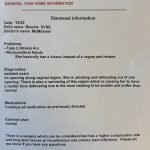
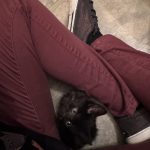
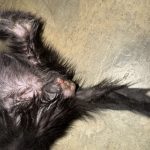


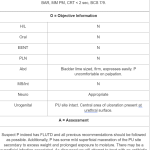
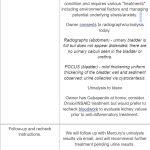







Hello,
Yikes. What a roller coaster.
Ok. So probably no one is going to like my advice, but here it is.
I do not get upset by a little prolapse. Kittens push really hard after diarrhea bouts. They just do. Resolve the diarrhea with the fecal check and a gradual transition to a good diet. If still having diarrhea I try panacur or metronidazole for just a few days.
The kitten tells you what to do from there. If playful and happy I manage the prolapse with belly massage and exercise. I am very very reluctant to add a purse string. Too pain and they start to push even harder.
If I have to purse string it is only for old cats. Or for puppies. But you often have to place it and then remove it 3 days later. And then replace it again. Often it takes two or three times. And no one ever wants to do it that often. So. I just try to avoid it in the first place.
Kittens heal soo fast. Just give them a chance .
Have the diarrhea in check. Probably two weeks after it occurred. Now constant hard to compacted BMs for the last 2.5 months. The only time the prolapse resected was for like two days after the manual exam. That was two months ago. It started to look irritated so went ahead with the purse string. Total of 3 months of prolapse, maybe half of the external sphincter involved,
He hated the massages, the steroid cream, wearing the cone, and the straining.
I’m concerned it’s going to be a failure. He’s pushing too hard and I’m having to help remove the impaction. His bowels just laugh at lactulose, 2mL tid. I asked if it may have been too tight and/or enema may be a good idea since it’s just getting stuck/backing up. They think everything is fine. It looks like when a human takes round the clock opioids with no stool softer and didn’t drink and water.
I’m just at a loss of what to do/ask for. I’m going to ask to try royal canin GI kitten. The hills biome and I/d are not helping. Tried pumpkin, probiotic, and adding coconut oil (not all together) to food, no help.
Great drinker, I add water to wet food, and urinates great. It’s just these darn compacted BMs.
It’s been a strenuous 3 months and this poor guy is such a forgiving trooper. I’m afraid of this does continue, it’s going to be a full on prolapse.
Purse string stitches come out tomorrow, total of seven days.